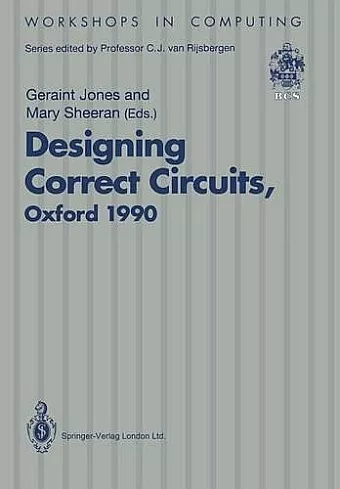Designing Correct Circuits
Workshop jointly organised by the Universities of Oxford and Glasgow, 26–28 September 1990, Oxford
Mary Sheeran editor Geraint Jones editor
Format:Paperback
Publisher:Springer-Verlag Berlin and Heidelberg GmbH & Co. KG
Published:30th Apr '91
Currently unavailable, and unfortunately no date known when it will be back

Springer Book Archives
These proceedings contain the papers presented at a workshop on Designing Correct Circuits, jointly organised by the Universities of Oxford and Glasgow, and held in Oxford on 26-28 September 1990.These proceedings contain the papers presented at a workshop on Designing Correct Circuits, jointly organised by the Universities of Oxford and Glasgow, and held in Oxford on 26-28 September 1990. There is a growing interest in the application to hardware design of the techniques of software engineering. As the complexity of hardware systems grows, and as the cost both in money and time of making design errors becomes more apparent, so there is an eagerness to build on the success of mathematical techniques in program develop ment. The harsher constraints on hardware designers mean both that there is a greater need for good abstractions and rigorous assurances of the trustworthyness of designs, and also that there is greater reason to expect that these benefits can be realised. The papers presented at this workshop consider the application of mathematics to hardware design at several different levels of abstraction. At the lowest level of this spectrum, Zhou and Hoare show how to describe and reason about synchronous switching circuits using UNilY, a formalism that was developed for reasoning about parallel programs. Aagaard and Leeser use standard mathematical tech niques to prove correct their implementation of an algorithm for Boolean simplification. The circuits generated by their formal synthesis system are thus correct by construction. Thuau and Pilaud show how the declarative language LUSTRE, which was designed for program ming real-time systems, can be used to specify synchronous circuits.
ISBN: 9783540196594
Dimensions: unknown
Weight: 628g
355 pages